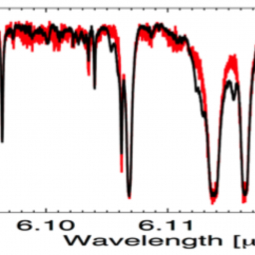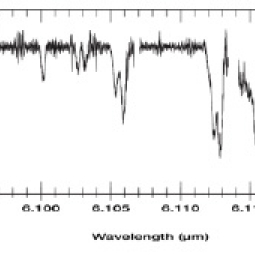An international team led by scientists at Johns Hopkins University and the University of California at Davis used the EXES high-resolution mid-infrared spectrometer onboard SOFIA to determine the amount and location of water molecules around protostar AFGL 2591. AFGL 2591 is object number 2591 in a catalog of strong infrared sources discovered by a series of small infrared telescopes launched in rockets during the 1960s by the Air Force Geophysical Laboratory.
This detection of water vapor would have been impossible to perform with any existing telescope, but was achieved by the unique combination of SOFIA’s vantage point above almost all of Earth’s contaminating atmospheric water vapor and the high spectral resolution and sensitivity of the EXES (Echelon-Cross-Echelle Spectrograph) instrument. In particular, EXES, with spectral resolving power of up to 100,000, allows spectral signatures of water in celestial sources to be distinguished from those of water in Earth’s atmosphere because of their different velocities along the line of sight.
These measurements for the first time allowed an unambiguous determination that most of AFGL 2591’s water vapor is located in an outflow rather than in the protostar’s circumstellar disk. That discovery is surprising, showing that gas in protostars has complex three-dimension structure and motions, requiring revision of models of the chemical and physical processes involved in star formation. These observations also demonstrate the potential for SOFIA/EXES to help our understanding of how water became incorporated into Earth and the other planets of our solar system.
The findings of Nick Indriolo and his collaborators were published in Astrophysical Journal Letters, 802, L14(2015) .
Figure 1 shows spectra of protostar AFGL 2591 and standard star Vega from 6.085 to 6.130 microns, superimposed. This specific wavelength range is not observable from any ground-based observatory. The strong absorption lines (wavelengths with low intensity) appearing in both spectra are caused by water vapor in Earth’s atmosphere.

